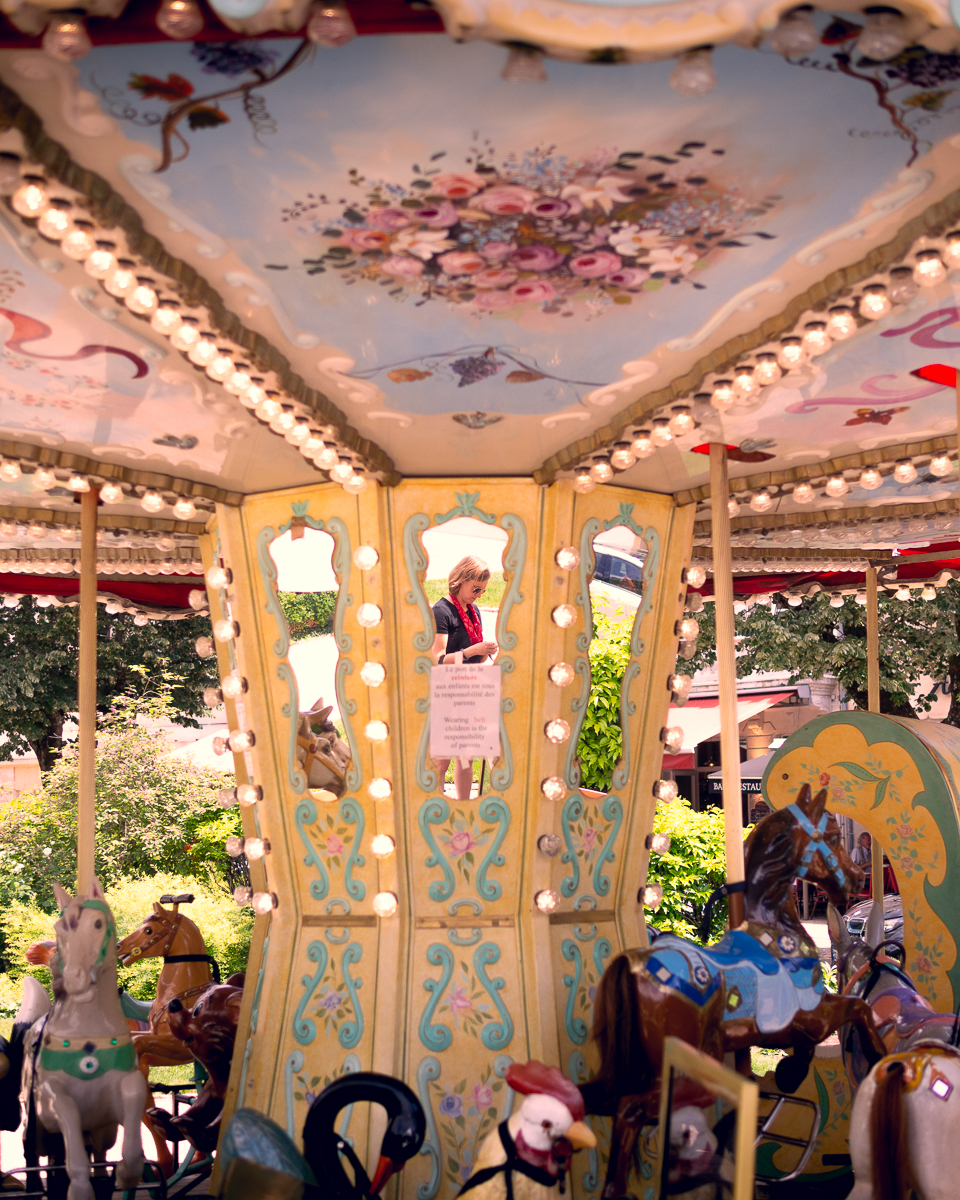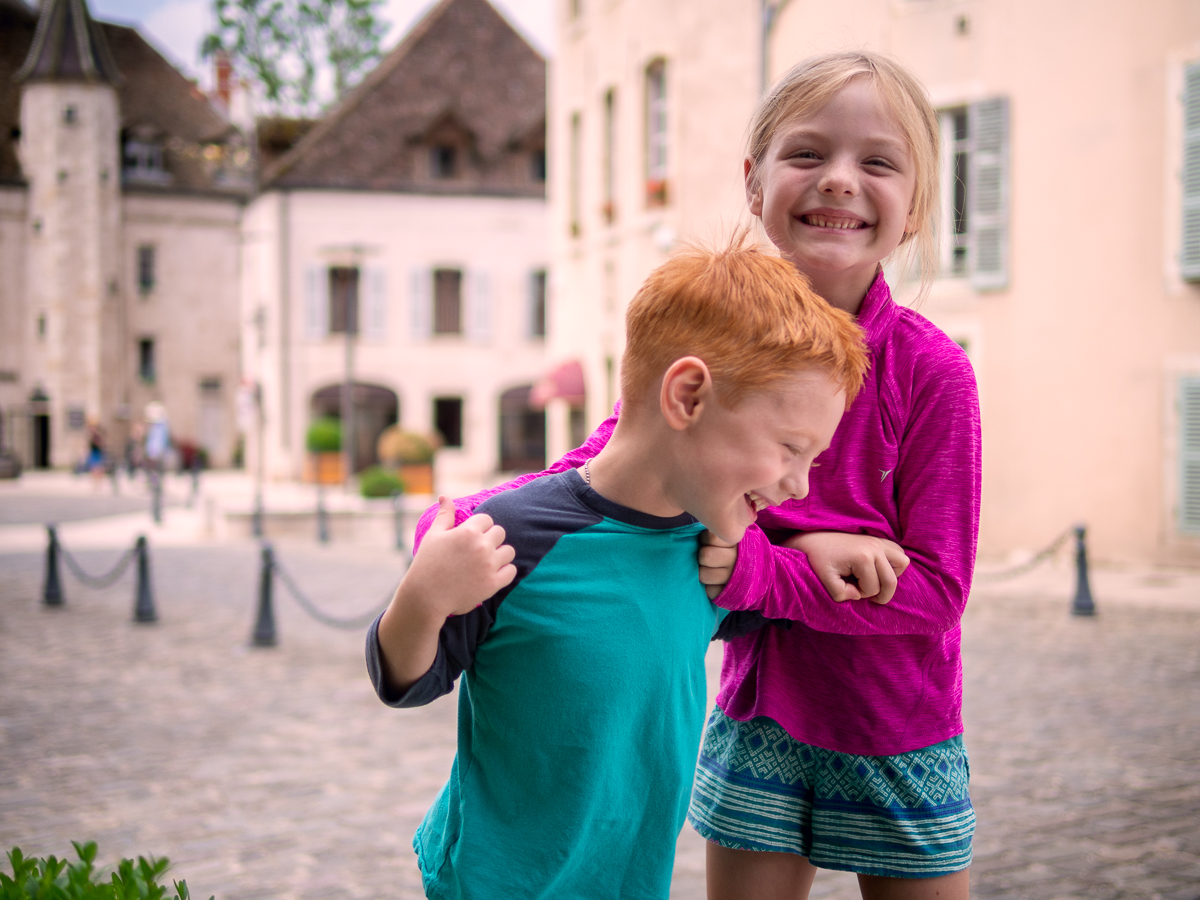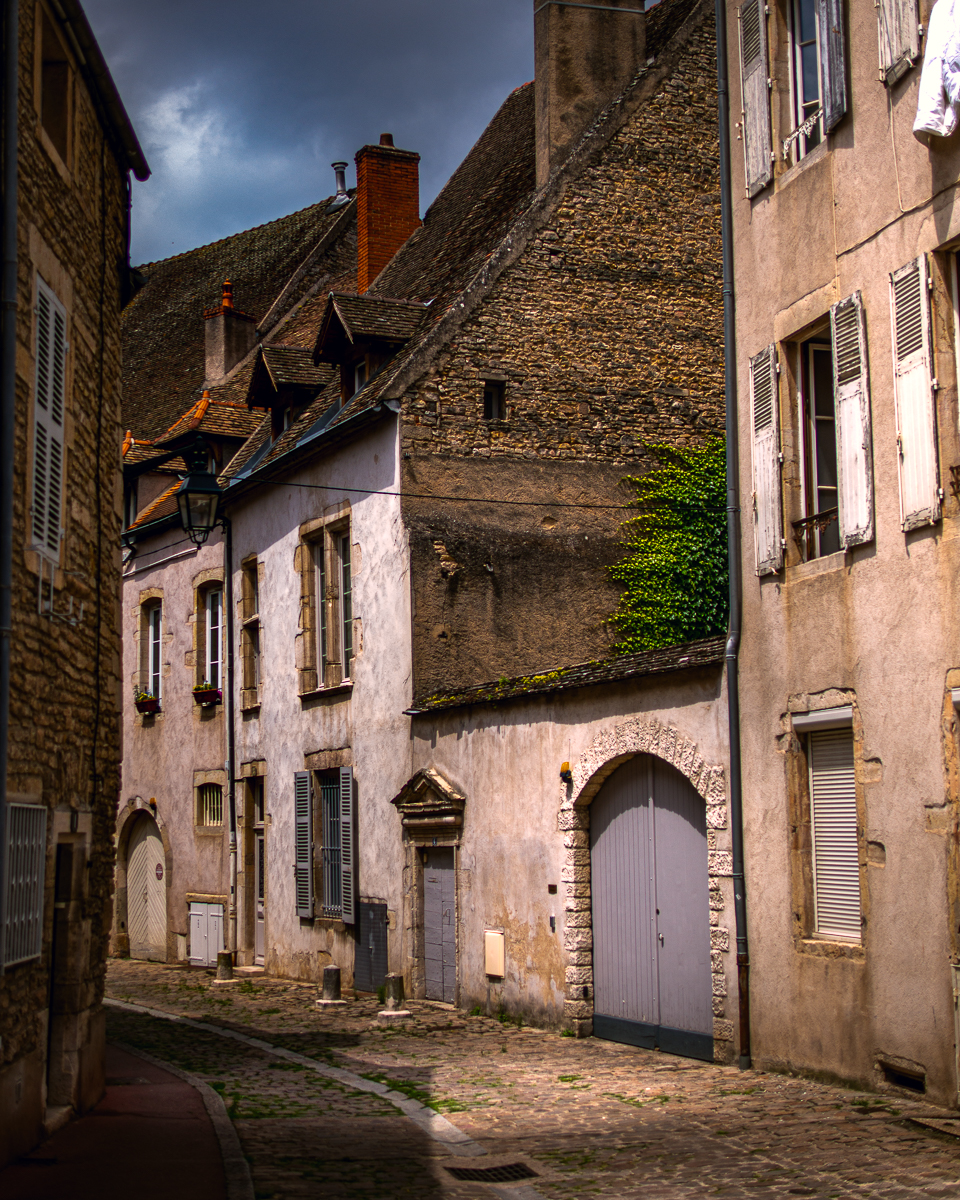 “Scusi, can you tell me where the hospices is?” said a voice in a thick Italian accent.
“Scusi, can you tell me where the hospices is?” said a voice in a thick Italian accent.
I turned, surprised to see a small frail white-haired man standing behind me.
“Of course!” I said with more than a hint of surprise and a heaping scoop of pride. “It’s right around that corner.”
The little man responded with a showering of thanks. I turned to the others, smiling broadly. Their faces looked confused and wanting to ask all sorts of questions. I simply shrugged and continued walking.
With our picnic provisions in hand we took a new route, deeper into the heart of old Beaune, and soon we reached its core. The center of the city is feature film ready. Buildings and street plans appear as if they were dreamed up in an amusement park executive office for charm, beauty and ease of use. Each of Beaune’s five centuries appear equally represented in the variety of construction. Yet it all comes together in a finely crafted harmonious symphony. Fairytale turreted buildings lined a lovely cobblestone square. Every stone and block looked its age yet as perfect as if it were laid yesterday. Concentric alleys and roads encircled a pristine and ancient-feeling cathedral at its heart. Its size was perfectly modest, lovingly complimenting Beaune itself. Many of the church’s original Romanesque features were incorporated into the medieval structure. Thick, round-arched clearstory windows sat above much larger and lighter pointed-arch windows with colorful stained glass.
I’ve long been evaluating medieval European churches for things like age and era by architecture alone. However, what is second nature to me I knew would be unknown to the children. I was well aware that this was the children’s first time entering such a special church. Multiple times as we approached Gigi referred to it as a castle. She had trouble separating churches from castles and would for the duration of the trip – a completely understandable nuance to me. I spent more time observing the children than the cathedral. I enjoyed their “oohs” and “ahhs” and other exclamations of amazement. They had thoughtful observations and asked intelligent questions and we took our time to explore the dark empty building.
I hadn’t really understood Beaune until now. We were finally seeing its core, its inception, its soul. The experience of meeting it for the first time felt special like an introduction to a great figure in history. Around the cathedral postage-stamp courtyards occupied any in between spaces, and I gather there isn’t a square foot in old Beaune without purpose. Every brick in every wall and every tree and plant that rose from the smallest patch of earth necessary to support them had strategic intent honed over centuries of meticulous fine tuning. Back passages led to open-air museums like the Musée du Vin de Bourgogne with its wood-framed storage building and historic grape-pressing machines. Around every corner wooden balconies fronted second floors of stone buildings and the town as a whole served as an unintentional real-life, living museum.
There’s a bond that forms when going on adventures with others. Especially if they are new for everyone. A book can only be read once for the first time. A movie can only be seen once for the first time. A twist ending can only be untwisted once. Similarly, standing at the guard house at Machu Picchu and absorbing 360 degree views gives instant context to all of the photos that have ever tried to capture the scene. And from that moment on, every photo resembles a cropped view of where the body has stood. The children will have that same experience with the Eiffel Tower, forever remembering standing on its gusty platform with sweeping Parisian views every time its name is uttered. Forever the five of us will share a special understanding of Beaune with each other, the children as equals, as we formulated our first impressions together.












































